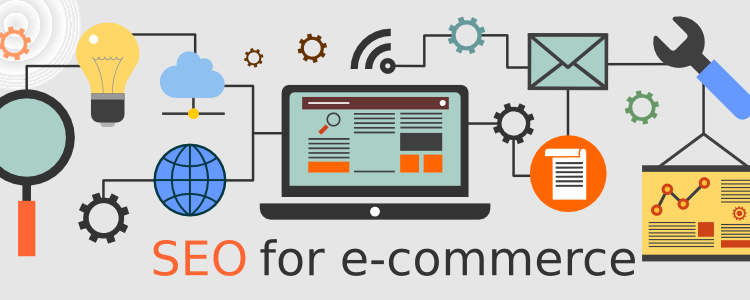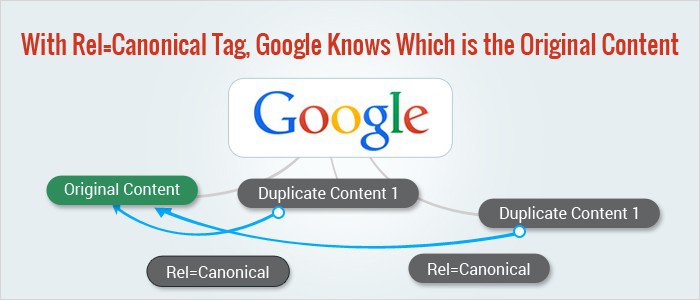SEO – Search Engine Optimization for the e-commerce website is different, but not at all difficult. It may seem pretty straightforward on the surface, but when you start to practice, you will face hundreds of interlocking pieces, and all of them must be properly monitored and adjusted in order to get positive results.
Although SEO tactics vary with different verticals, the fundamentals still apply: earning quality inbound links, publishing great content and maintaining the ongoing social media campaign. Additionally, you will need to follow specific Digital Marketing strategies for your e-commerce website to maximize organic traffic, potential leads and sales.
Do you want to know how to rank for your e-commerce site? Read this step-by-step guide to E-commerce SEO to increase your online store’s Google traffic and drive more sales.
E-commerce Keyword Research
There is a number of keyword research tools out there. Most importantly, in a world where the majority of online web traffic stems from a string of text which is typed into a search box, Keyword Research can be a deciding factor in the fate of your products/business.
SEO encompasses plenty of tactics but the underlying principle is that you are helping Google and other search engines better understand what your e-commerce site is about and what it sells. And in return increases your visibility. One of the foundational tactics of SEO is precise keyword research.
Keyword research is the simple art of better understanding the terminology that your potential customers are using to find the products you are selling and then matching your website and marketing terminology.
Keep in mind that the SEO and Keyword research is a never-ending process. There is a number of powerful tools to find keywords, but sometimes the logic of digital marketer do wonders, it demands time and patience. Over time, the algorithms of search engines changes and the terms of your customers use will change. So, make sure you routinely go over and over the keywords list to make sure it is up-to-date and accurate. And above all relevant.
Technical SEO for Ecommerce Sites
Optimize your e-commerce website for mobile
It is essential today to develop a responsive website which behaves according to the users’ screen size. A number of mobile users are increasing day by day, hence this is vital for any website, but especially for an e-commerce website, otherwise, it would be nearly impossible to navigate. Responsive design or an interactive mobile app will help you provide a smooth mobile experience. This is now becoming increasingly important in the coming years.
You can check your Mobile Friendly Test over here.
Optimize internal search functionality
Google is not only the search engine that you need to be prepared for. If you want users to stick to your website for shopping, you need to build such type of website where they can search for various products. SEO Experts advise to build and refine the internal search functionalities that can efficiently scour websites and provide the relevant results to your customers.
The integration of search functionalities means you need to develop an algorithm that can handle predictive searches, misspellings and sort through each web pages on the website. This means optimizing products titles and categories, both internally and externally.
Add Schema Mark-up
How would you prefer the products to be displayed in the SERPs? With an image, rating, reviews and also a little briefer information can obviously make people click. And this can be achieved by adding schema markup, it is semantic vocabulary that you put on your website to help the search engines to be more informative for users. It is not only eye-catching, but it also provides information about the product, and this will boost CTR up by 30%.
This will bring more traffic, which results in more sales. What’s more, Google uses all this information to help understand your product (i.e. product page, category page, blog page etc, and all this is very useful for E-Commerce SEO). All this is okay but the schema markup can get complicated sometimes. So let’s try to distil basics.
On the Product Pages, add markup so that Google can provide a piece of detailed product information including Google image search. For this, you could use the schema.org Product markup.
Now, if you’re using breadcrumbs on your site (Which is recommended), you can add schema markup to that too. Google says it uses breadcrumb markup in the body of the webpage to categorize the information from the page in the search results.
Make your site secure
People nowadays used to check out for the ‘web security’ before typing card details into any website, to ensure that the site is secure or not. They usually look for the small padlock symbol in the address bar or a web address with https:// (here the s stands for ‘secure’). It is always been a great practice for every e-commerce website to have HTTPS encryption for users security. If you do not have it, get it today.
Implement Pagination
When your site grows beyond dozens of pages for the specific content/products of category or subcategory, all of the links on one-page is hard-to-use and will take longer loading time. The web pagination will automatically improve the responsiveness of the website, user experience and reduce the clutter on the page. It is a practice of subdividing links to content on multiple pages.
Web Page that contains hundreds or thousands of links, is inadvertently hurting the access of search engines to the content-rich pages – which makes the pagination essential. While SEO pagination seems like an easy concept, it can mess with your rankings if you’re not careful.
Canonicalize Products
Content duplication is a complicated topic, but when a search engine crawls many URLs with similar content, it might cause a number of problems for SEO. If search engine crawlers have been wade through more and more duplicate content, then as a result, they might miss some of your unique content or it may dilute your ranking ability. Also, if the content does not rank, search engines may pick the wrong URL as original content. Here, canonicalization helps you control the duplicate content. This way you can tell the search engine that a specific URL represents a master copy of the particular page. Integration of canonical products can prevent problems caused by identical information appearing on multiple URLs.
Create Sitemap
Your eCommerce website is made up of many moving parts, such as the shopping cart, payment options, order confirmation page, wish list and many other. Every piece and page is serving your customers in some or other way, but some of them exist almost solely to serve search engines. And a sitemap is one such thing
It will assist the user in navigating and understanding the website, but it will also help the website to communicate with search engines. It is important that SEO when comes to site mapping, cannot be overlooked. It is an essential part of getting spiders to crawl and index the website. It is worth investing your time to build a great sitemap.
On Page SEO
Build relevantly titled URLs
Each URL of your e-commerce store should be meaningful, relevant to the page, and keyword optimized. In case, if you are using the automated means of page creation, you can see that the URL ending with a long series of numbers and characters, well that is exactly what needs be change immediately. For example, if your e-commerce store is selling ‘laptops’ on a specific product page, end your URL with /Dell-Inspiron-3000-Core-i5-7th-Gen rather than /1028864180.
Create unique Descriptions for every Product
This is extremely crucial for SEO Services. It feels tempting to use the original manufacturers’ description of the products or you can repeat sections of content for the same categories. But the best approach is to create a completely unique yet precise description for each of your products.
Yes, it seems a lot of work up front, but the duplicate content can sometimes hinder your campaign. Hence hiring Digital Marketing Company to invest time and money to write unique SEO friendly content is a healthy option. Think like this, a customer is on the webpage and looking for a specific product that fits her/his need. Now, the final step should be hitting on ‘Add to cart’ button, depends on product availability. To convince the customer, the product description is one of the prime aspects of your online store. Even though it holds optimum power, good product copy demands professional help and can be hard to write.
Include catchy Metadata for Products
When the page appears on a search engine ranking page – SERP, the metadata appears as the information in form of text under the hyperlink. You should use this to your advantage by writing compelling content for each products’ metadata. The goal is to catch users’ attention immediately.
Internal Linking
Every e-commerce store needs to use relevant links to other pages on the site, in order to help your potential customers to browse and find the right product/information they are looking for. The internal links strengthen your communication to the search engines.
By linking your web pages to others on your website, you can use these specific keywords in your e-commerce content to make it more clear to search engines which of your web page is the one you want to rank for the given term. To achieve that follow the steps:
- Use keywords in the anchor text of the internal links
- Link your product pages to other similar product pages
- Link your products/information pages to the relevant category pages (and vice versa)
- Use the internal links to take the visitors on an online journey to purchase
For the e-commerce store, a focus on internal links gives your website a huge boost. Make sure you are taking care of low-hanging fruit in your SEO project this year, there are definitely potential opportunities.
Optimize the Loading Time
It is important to have high-quality images of the products, but do not go overboard. Having high-quality images on a single page can slow down the website, which is not good for your SEO. Instead, you can reduce the size of the images, or you can add a feature that allows users to ‘zoom in’ to see a bigger version and details. This will help you keep the loading speed in check while still giving your users a fine experience.
Integration of Product pages with Social Media
Social media is one of the main activities that the customer take part in. Syncing Social Media Platforms with the products or services can help you drive added values to your customer base. When you establish basic social integration, along with that you should add social-share buttons on each product pages, so that users can pass on information about your post with their circle. This is a wise business practice when it comes to Social media Marketing, in general.
When adding the social plugins to your product pages, add them as close to the image of the product or service you’d like them to share as possible in an organized fashion. The products that perform effectively on the social media might help you get deep business insights in terms of what to buy.
Keep all the pages Running-up
It is advisable to keep out-of-stock and discounted item pages up and running. At first, this might seem counterintuitive. Why bother keeping the page up? When you are no longer offering the item. Is it really worth? Yes – Because it gives you more permanent pages, also a bigger base of the indexable content for Google bots to scour.
But in order to keep the clean track, and help your customers all you need to do is, add any indication or headline saying that item is no longer available. Or you can disable the add to cart button and raise a text box saying ‘Out-of-stock’.
Encourage and Respond to User Reviews
First of all, while designing the website create a separate section for users’ review for each individual products on your store. Encourage your customers to write reviews on each relevant product pages. Amazon executes this thing perfectly, you can take amazon.com reviews as a reference to get an idea on, how to increase customer engagements in a most appropriate way.
Uniqueness will help you boost your Google rankings, value-adding content and with your e-commerce store, you’ll have a key opportunity to generate free content form the strong user base. Moreover, you can boost sales by sharing more insight regarding the quality of the products you sell.
Google Tag Manager
Digital marketing thrives on the data. No matter what type of site you have, it is essential to understand how people interact with your site. (For e-commerce it is highly recommended) By tagging the e-store using Google Tag manager along with Google Analytics, you’re able to collect much data than you can. You can use tags for scroll tracking, conducting surveys, monitoring form submissions, generating heat maps, remarketing, and tracking how people arrive at your website.
Tags are also used to monitor specific events such as clicks on certain links, file downloads, and items being removed from the shopping cart. The top three other benefits include:
- Asynchronous tag loading leads to the faster page load times.
- GTM Supports all the Google and selected 3rd party tracking and marketing tags
- Relatively intuitive and easy to use
- Provides fast, accurate data, and dependable information
- It is free.
- The more data you have, the better you can optimize your campaigns.
Starting to use Google Tag Manager is brainer.
Conclusion
It is easy to read through the entire list of SEO Tips and Tactics that help you boost your business, however putting these strategies into immediate action is demands for professional help from Best SEO Company and hard work. Start playing field challenges that will lead you to the winding path. Whenever in doubt – just start with one, and see the results.
Author Bio:
Parth Bari is a Tech Addict, Software Geek and a Blogger at Kunsh Technologies. I love to help people and found blogging the best way to help people out there so express my opinions through writing.
For more details you can visit: https://www.kunshtech.com










